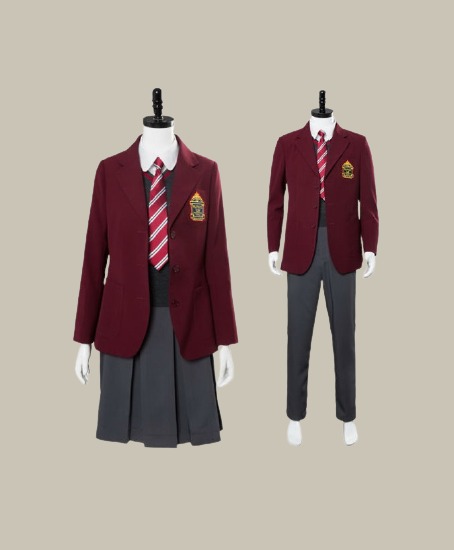Booklet: Prestige Booklet - Garrison Island Part V (Alderney 2001)
Prestige Booklet - Garrison Island Part V (Alderney 2001)
16 October (Alderney ) within release Garrison Island 2001 - Royal Navy goes into circulation Booklet Prestige Booklet - Garrison Island Part V face value 7.50 Guernsey pound
| Booklet Prestige Booklet - Garrison Island Part V in catalogues | |
|---|---|
| Michel: | Mi: GG-AL MH11 |
Booklet is horizontal format.
Also in the issue Garrison Island 2001 - Royal Navy:
- Booklet Pane - Civilian labourers assist a diver during the construction face value 2*22_2*27;
- Booklet Pane - Cleaning the 6 pounder gun on a torpedo boat face value 2*36_2*40;
- Se-tenant - Construction New Breakwater / Official Party inspecting face value 2*22;
- Se-tenant - HMS Emerald, 1860 / Disembarking Troops from HMS Emerald face value 2*27;
- Se-tenant - HMS Majestic at Anchor, 1901 / Torpedo boats outside Harbour face value 2*40;
- Booklet Pane - HMS Viper, the fastest ship in the Royal Navy face value 2*27_2*40;
- Se-tenant - Moored Torpedo boats, 1890 / Quick Firing Gun, 1890 face value 2*36;
- Booklet Pane - One of the searchlights on a torpedo boat destroyer face value 2*22_2*40;
- Booklet - Prestige Booklet - Garrison Island Part V face value 7.50;
- Booklet Pane - The carpenters' workshop keeping busy maintaining the vessel face value 2*22_2*40;
- Booklet Pane - The Royal Artillery disembarking from HMS Emerald face value 2*27_2*36;
Booklet Prestige Booklet - Garrison Island Part V it reflects the thematic directions:
An anniversary is the date on which an event took place or an institution was founded in a previous year, and may also refer to the commemoration or celebration of that event. For example, the first event is the initial occurrence or, if planned, the inaugural of the event. One year later would be the first anniversary of that event. The word was first used for Catholic feasts to commemorate saints. Most countries celebrate national anniversaries, typically called national days. These could be the date of independence of the nation or the adoption of a new constitution or form of government. The important dates in a sitting monarch's reign may also be commemorated, an event often referred to as a "Jubilee".
A modern sailing ship or sailship is any large wind-powered vessel. Traditionally a sailing ship (or simply ship) is a sailing vessel that carries three or more masts with square sails on each. Large sailing vessels that are not ship-rigged may be more precisely referred to by their sail rig, such as schooner, barque (also spelled "bark"), brig, barkentine, brigantine or sloop. There are many different types of sailing ships, but they all have certain basic things in common. Every sailing ship has a hull, rigging and at least one mast to hold up the sails that use the wind to power the ship. The crew who sail a ship are called sailors or hands. They take turns to take the watch, the active managers of the ship and her performance for a period. Watches are traditionally four hours long. Some sailing ships use traditional ship's bells to tell the time and regulate the watch system, with the bell being rung once for every half hour into the watch and rung eight times at watch end (a four-hour watch). Ocean journeys by sailing ship can take many months, and a common hazard is becoming becalmed because of lack of wind, or being blown off course by severe storms or winds that do not allow progress in the desired direction. A severe storm could lead to shipwreck, and the loss of all hands. Sailing ships are limited in their maximum size compared to ships with heat engines, so economies of scale are also limited. The heaviest sailing ships (limited to those vessels for which sails were the primary means of propulsion) never exceeded 14,000 tons displacement. Sailing ships are therefore also very limited in the supply capacity of their holds, so they have to plan long voyages carefully to include many stops to take on provisions and, in the days before watermakers, fresh water.
A ship is a large watercraft that travels the world's oceans and other sufficiently deep waterways, carrying passengers or goods, or in support of specialized missions, such as defense, research and fishing. Historically, a "ship" was a sailing vessel with at least three square-rigged masts and a full bowsprit. Ships are generally distinguished from boats, based on size, shape and load capacity.
A uniform is a variety of costume worn by members of an organization while usually participating in that organization's activity. Modern uniforms are most often worn by armed forces and paramilitary organizations such as police, emergency services, security guards, in some workplaces and schools, and by inmates in prisons. In some countries, some other officials also wear uniforms in their duties; such is the case of the Commissioned Corps of the United States Public Health Service or the French prefects. For some organizations, such as police, it may be illegal for non-members to wear the uniform.
A vehicle (from Latin: vehiculum) is a mobile machine that transports people or cargo. Typical vehicles include wagons, bicycles, motor vehicles (motorcycles, trucks, buses), railed vehicles (trains, trams), watercraft (ships, boats), aircraft and spacecraft. Land vehicles are classified broadly by what is used to apply steering and drive forces against the ground: wheeled, tracked, railed or skied. ISO 3833-1977 is the standard, also internationally used in legislation, for road vehicles types, terms and definitions.





